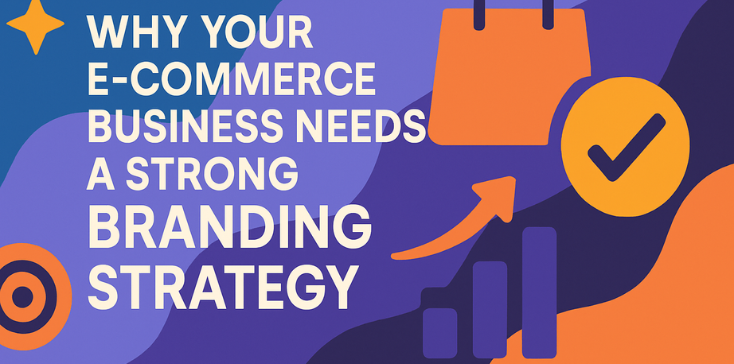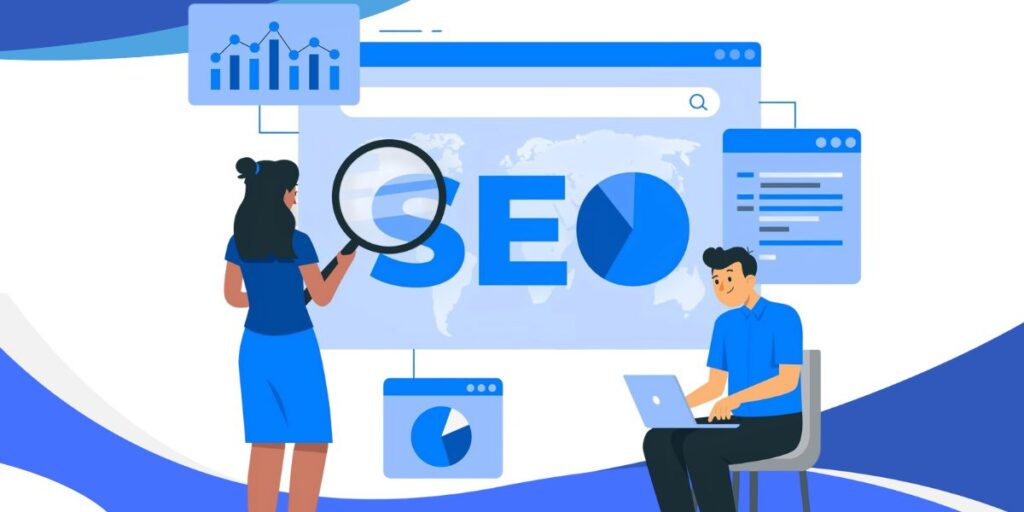Ever sat down with a cup of coffee, stared at your analytics dashboard, and thought, “Why am I not seeing more qualified leads?” You’re not alone. B2B eCommerce SEO is its own beast—nothing like optimizing a lifestyle blog or a D2C storefront.
Here’s the thing:
Your buyers aren’t impulse scrollers. They’re on a mission. And if your site doesn’t answer their exact questions, they’ll click away faster than you can say “add to cart.”
Over the decade at Growwithba, we’ve learned that the right approach to B2B SEO can turn your website into a lead-generation engine—quietly powerful, delightfully efficient, and yes, human-centric. Ready to dig in? Let’s go.
Understanding the B2B eCommerce SEO Landscape
First off, let’s clear one thing up:
B2B buyers don’t browse.
They research.
They compare.
They download spec sheets, they loop in colleagues, and they evaluate ROI before they even think about “Buy Now.”
So your B2B eCommerce strategy has to mirror that journey. When they moving from awareness to consideration to decision, in language that resonates.
Imagine your site as a salesperson: knowledgeable, patient, and capable of answering every objection before it’s voiced. That’s what effective B2B ecommerce SEO strategy does. They bridges the gap between someone googling “industrial coolant pumps” and them filling out your quote form.
Strategy #1: Intent-Driven Keyword Mapping
You know that feeling when you overhear two engineers debating pump horsepower at a trade show? That’s the goldmine of real-world search intent. Broad keywords like “coolant pumps” have their place, but they often attract hobbyists or low-intent traffic.
Instead, map keywords by intent tier:
- Top-of-Funnel (Awareness): “What is a centrifugal coolant pump?”
- Mid-Funnel (Consideration): “centrifugal vs. gear coolant pumps for manufacturing”
- Bottom-Funnel (Decision): “bulk pricing centrifugal coolant pumps supplier India”
Here’s the thing: most of our clients at Growwithba discover that their mid- and bottom-funnel pages are buried under generic content. We remedy that by interviewing sales reps, mining support tickets, and even scanning RFPs. The result? A keyword list that’s rooted in real conversations—no guesswork involved.
Strategy #2: Content That Speaks to Every Stakeholder
In B2B eCommerce SEO, you’re rarely selling to one person. There’s the procurement manager, the technical lead, and maybe the CFO who cares about total cost of ownership. So your content needs layers:
- Technical Deep Dives
Think downloadable spec sheets, performance graphs, integration guides. Engineers love this stuff. - Business Case Narratives
A short story about how Company X saved 20% on maintenance by switching to your pump. CFOs nod along here. - Implementation Walkthroughs
“How we installed 50 units of industrial pumps in under a week”—this reassures operations teams.
You don’t need a dozen separate blog posts. A single “Solution Hub” page can house all three, with clear anchors and internal links. It’s like building a content clubhouse—every stakeholder finds their room.
Strategy #3: Optimizing Product & Category Pages
Treat these pages as your digital sales reps. If they can’t answer key objections, your buyers bounce.
- Headlines & Meta: Use precise, intent-driven phrases. “High-Capacity Centrifugal Pumps for Chemical Plants” trumps “Best Industrial Pumps.”
- On-Page Copy: Lead with benefits (“Reduces downtime by up to 30%”) and then layer in specs (“Flow rate: 100–500 GPM; Materials: 316 stainless steel”).
- CTAs & Trust Signals: Include “Request a Quote” buttons, customer logos (“Trusted by MegaChem Industries”), and downloadable assets.
- Schema Markup: Product schema, FAQ schema—these little tags help Google surface rich results, and they look great in search.
One quick tweak we made for a valves manufacturer: added an “Industries Served” section right above the fold. Qualified leads jumped by 25% in two weeks—because buyers instantly saw relevance.
Strategy #4: Technical SEO for a Seamless Experience
Your site may look shiny, but if it crawls at 2005 speeds, you’re losing momentum. We often audit sites and find things like:
- Bloated Images & PDFs: A quick compression can shave seconds off load times.
- Orphaned Pages: Content hidden from sitemaps or internal links—dead ends for both users and crawlers.
- Clunky Site Search: Even B2B buyers expect predictive suggestions and filters by spec, price, or region.
Pro tip: run a crawl with Screaming Frog, then sort pages by load time and click zero-traffic pages. You’ll spot low-value content hogging crawl budget and fix it with redirects or consolidation.
Strategy #5: Building Relevance-Focused Backlinks
In B2B eCommerce SEO, it’s not about volume. It’s about contextual authority. A single link from an industry standards body or a vendor partnership page can trump dozens of generic directories.
Here’s a simple framework:
- Identify three key partner networks (e.g., component vendors, trade associations, complementary service providers).
- Offer to co-author a guide or case study, showcasing joint success.
- Syndicate that content on both sites, with links back to your solution hub.
We did this with a logistics software client. A co-branded white paper with a major ERP vendor drove a high-authority backlink—and led to a 40% spike in demo requests from referral traffic.
Strategy #6: Leveraging First-Party Data & Analytics
Your CRM and analytics tools are full of clues about what works—and what doesn’t. Don’t just track sessions; track pipeline metrics:
- Which landing pages generate phone calls?
- What blog posts lead to product page visits?
- Which keywords bring in high-value accounts?
At Growwithba, we connect Google Analytics to Salesforce, so every organic session can be tied back to revenue. That’s how you prove SEO’s value in boardroom conversations—no more “we think it’s nice.”
Case Study: Reviving a Legacy eCommerce Brand
Let me share a quick story. We partnered with an industrial hose supplier whose site was, frankly, a ghost town. Most product pages hadn’t been touched since 2014. Traffic was steady but stale—and leads were thin.
What we did:
- Keyword audit to spot forgotten mid-funnel opportunities (“hydraulic hose assemblies for mining”).
- Content overhaul: merged low-value blog posts into a centralized “Hose Selection Guide.”
- Technical cleanup: removed 300 orphaned SKUs, optimized images, and improved mobile UX.
- Link outreach: tapped into supplier networks for co-branded tech briefs.
Outcome: In six months, organic sessions rose by 120%, but more importantly—qualified lead forms increased by 95%. The sales team actually looked forward to SEO reports after that.
Final Thoughts
B2B eCommerce SEO isn’t a one-and-done project. It’s an ongoing conversation—a series of small, consistent tweaks that gradually build authority, relevance, and trust. If you approach it like a checklist, you’ll get checklist results. But if you treat your website like a seasoned salesperson—attentive, adaptive, and always learning—you’ll see your pipeline fill up without chasing cold outreach.
At Growwithba, we thrive on these challenges. We pair human-first content with technical precision, and we measure success in real business outcomes—not vanity metrics. If you’re ready to turn your B2B eCommerce site into a growth engine, you know who to call.
FAQ: Real Questions from B2B eCommerce Marketers
Q: How soon will I see results from B2B SEO?
You can expect initial traction in 3–4 months for mid-funnel keywords; 6+ months for top-funnel authority. But small wins—like improved product page clicks—can happen in weeks.
Q: Should I focus more on content or technical fixes?
Both matter. However, if your site speed is poor or your pages aren’t crawlable, even the best content won’t perform. Start with a quick technical audit, then layer in strategic content.
Q: How many backlinks do I actually need?
Quality over quantity. A handful of high-relevance links (from partners, industry bodies, trade publications) will far outperform dozens of low-quality links.
Q: Can I manage B2B eCommerce SEO in-house?
If you have bandwidth for ongoing audits, content creation, outreach, and analytics—then yes. Otherwise, partnering with a specialized agency like Growwithba can accelerate results and reduce trial-and-error.
Q: What’s one mistake to evade?
Don’t treat B2B like B2C. Bulk orders, multi-stakeholder decisions, and longer sales cycles demand a tailored approach. If you’re still targeting “best deals” and “flash sales,” you’re off-track.
![BA LOGO 2[1] Logo](https://growwithba.com/wp-content/uploads/elementor/thumbs/BA-LOGO-21-rctdwc6e44k0gscol760abdhmupxvrcikanaiw5kow.png)



